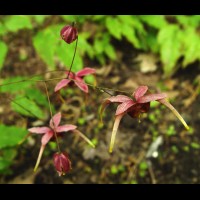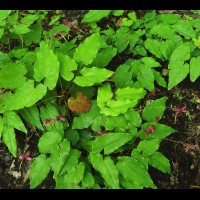Epimedium 'William Stearn' (Cc. 150004)
A hybrid from Robin White of the former Blackthorn Nursery in Hampshire, England. As one of the earliest "red" flowering epimediums, it was named for the late William Stearn who wrote the monograph on Epimediums in 1938 (revised in 2002 by Timber Press).
The arrow-shaped, semi-evergreen leaflets form a handsome clump, exhibiting reddish-brown mottling in the spring. Produces short, few-flowered stems of muddy red and yellow flowers. I have found it to be slow to establish in the garden. The foliage is its greatest asset, in my opinion.
A hybrid from Robin White of the former Blackthorn Nursery in Hampshire, England. As one of the earliest "red" flowering epimediums, it was named for the late William Stearn who wrote the monograph on Epimediums in 1938 (revised in 2002 by Timber Press).
The arrow-shaped, semi-evergreen leaflets form a handsome clump, exhibiting reddish-brown mottling in the spring. Produces short, few-flowered stems of muddy red and yellow flowers. I have found it to be slow to establish in the garden. The foliage is its greatest asset, in my opinion.

